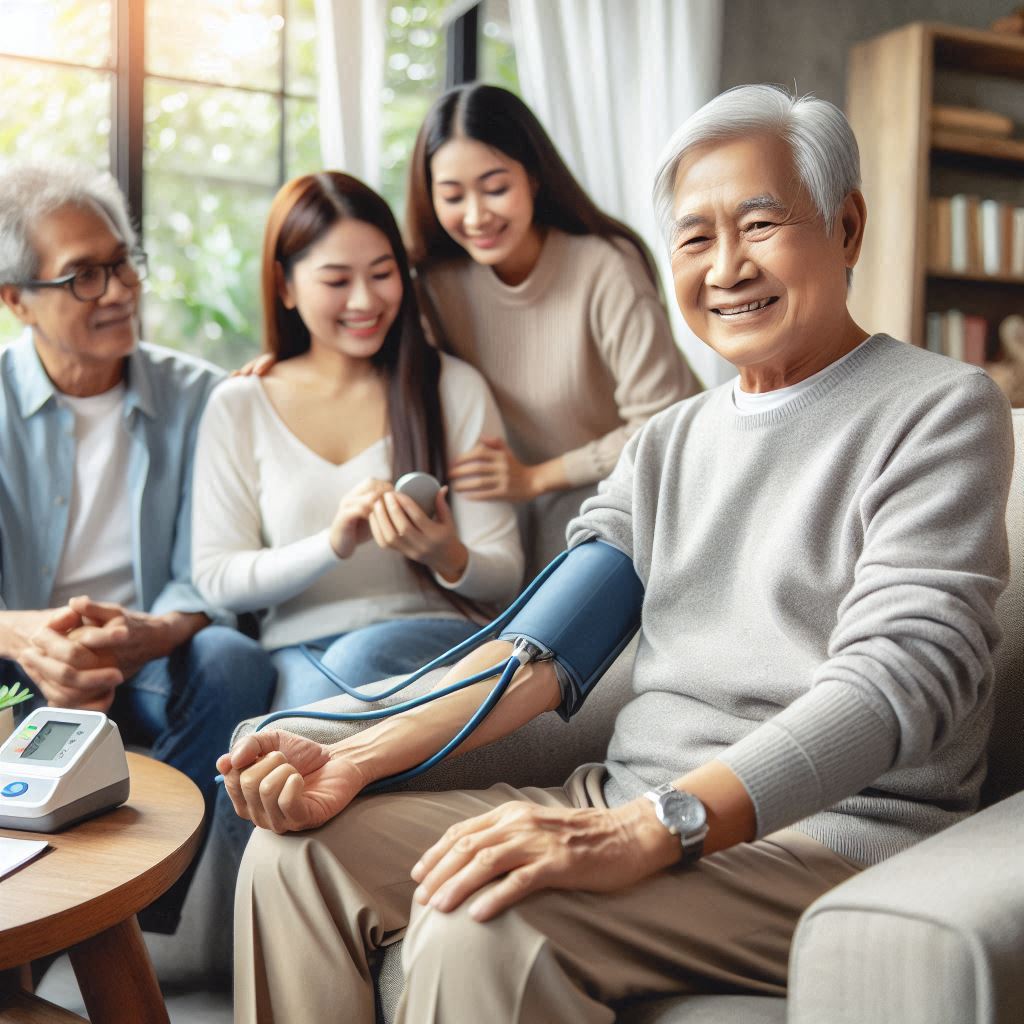Ensuring proper blood pressure management for elderly at home is crucial for their long-term health and well-being. This post will explore effective strategies and tips for monitoring and maintaining healthy blood pressure levels in senior individuals within the comfort of their own homes.
Introduction
Blood pressure management becomes increasingly complex with age. While 120/80 mmHg might be the gold standard for younger adults, seniors often face different guidelines and considerations. For an 80-year-old, slightly higher readings may actually be protective, while overly aggressive treatment could lead to dangerous drops in blood pressure.
At Healing Hands Home Care, we help Chicago-area seniors and families navigate these nuances with:
✅ Age-specific blood pressure targets
✅ Medication management strategies
✅ Lifestyle adjustments that work for seniors
✅ When to seek medical attention
This guide explains why “normal” changes after 80 and how to maintain optimal vascular health without compromising safety.
Key Takeaways
- New Standards: 130-150 mmHg systolic may be ideal for octogenarians
- Risks of Overtreatment: Excessive lowering increases fall risk by 30%
- Home Monitoring Tips: Best times/tools for accurate readings
- Chicago Resources: Rush Hypertension Clinic, Northwestern Senior Heart Health
- Medicare Coverage: Free annual wellness visits include BP checks
- Our Support: Medication reminders + fall prevention strategies
Main Content
1. Why Blood Pressure Rules Change After 80
Physiological Changes:
- Arterial stiffness naturally increases systolic pressure
- Baroreceptor sensitivity declines (harder to regulate sudden drops)
Clinical Evidence:
- STEP Trial (2021): Found 130-150 mmHg optimal for 80+
- JNC8 Guidelines: Relaxed thresholds for seniors with comorbidities
Dangers of Overtreatment:
- Orthostatic hypotension → falls (#1 cause of senior injury)
- Reduced cerebral perfusion → confusion
2. Current Guidelines by Age Group
| Age Group | Ideal Systolic | Ideal Diastolic | Notes |
|---|---|---|---|
| <60 | <120 mmHg | <80 mmHg | Standard target |
| 60-79 | <130 mmHg | <80 mmHg | Individualized approach |
| 80+ | 130-150 mmHg | <90 mmHg | Avoid <130 systolic |
Chicago Specialist Insight:
“For frail seniors, we often accept 150 systolic to preserve kidney function and prevent falls.”
— Dr. Emily Park, Rush Hypertension Center
3. Special Considerations for Chicago Seniors
Climate Factors:
- Winter cold snaps → vasoconstriction → higher readings
- Summer humidity → dehydration → lower readings
Local Resources:
- Free BP clinics: Chicago Public Health mobile units
- Medication reviews: UIC College of Pharmacy senior program
4. How to Monitor at Home
Best Practices:
- Use upper-arm cuff devices (avoid wrist monitors)
- Check at same time daily (morning before meds)
- Sit quietly for 5 minutes first
- Record readings in a logbook (show to doctor)
When to Call the Doctor:
- Systolic >160 mmHg consistently
- Dizziness when standing
- New headaches with vision changes
FAQ Section
Q: Is 140/90 OK for an 85-year-old?
A: Yes—this falls within the safe range unless they have diabetes.
Q: Why does my mom’s BP drop after meals?
A: Postprandial hypotension is common; suggest smaller, low-carb meals.
Q: Where can seniors get free BP checks in Chicago?
A: Walgreens “Healthcare Clinics” or Chicago Public Library health days.
Q: Should blood pressure meds be taken at night?
A: New research says yes—reduces cardiac risk by 45% (European Heart Journal).
Q: How can home care help with BP management?
A: We provide medication reminders, fall risk assessments, and transportation to cardiology appointments.
Call-to-Action
Concerned about a senior’s blood pressure? Healing Hands’ caregivers are trained in age-appropriate BP monitoring and medication safety.
📞 Call (773) 792-3333 for:
- Personalized hypertension care plans
- Coordination with Chicago cardiologists
- Fall-prevention home assessments
Serving all Chicago neighborhoods—because proper BP management requires both medical expertise and compassionate daily support.

